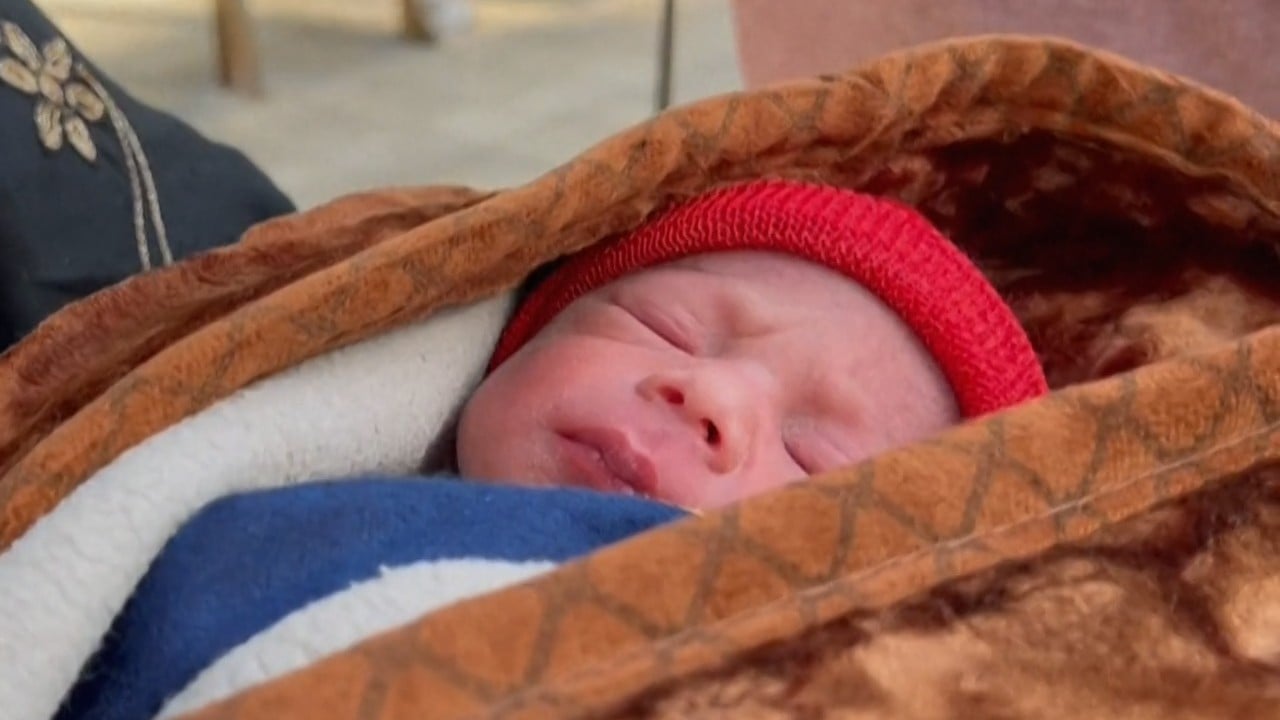
Afghan women become YouTubers to bypass Taliban work bans: ‘had to do something to generate income’
- YouTube channels not only provide income, but also serve as a means for women to communicate their messages, experiences and aspirations, one analyst said
- The Taliban have stopped most Afghan female staff from working at aid agencies and closed beauty salons, putting tens of thousands out of work
Hayat, 21, was a budding actor in local film and television until the Taliban seized power in 2021 and began issuing decrees on women that included banning TV dramas with female actors and ordering women to wear strict hijab while presenting the news.
“We do not use any special equipment like cameras, lights, cranes or fancy props. We record programmes on our phones,” said Hayat, whose YouTube channel has garnered more than 20,000 subscribers since its launch last September.
From rugs to dresses, Afghan women craft a living selling handmade products
Hayat said she had faced hostility for her channel, and so wears a medical mask and sunglasses for her safety when she sometimes films outside.
“It is very challenging for girls and women who work outside the home, especially those who appear on camera and make YouTube content,” Hayat told the Thomson Reuters Foundation from Kabul.
Hayat declined to say how much she earned, but said it was enough to support her family.
International sanctions have severely limited transactions with Afghan banks, so most YouTube content creators had friends abroad pass on earnings via money-transfer companies.
Hayat said most of her viewers were in the United States, Canada, Denmark and Australia, with audiences also in Turkey, Pakistan and Afghanistan.
Taliban ‘control’
The Taliban have stopped most Afghan female staff from working at aid agencies and closed beauty salons, putting tens of thousands out of work. They also barred women from parks and curtailed travel for women without a male guardian.
Most girls and women have been barred from attending high school and going to universities.
“In a situation where women’s hands are tied from working in the media, YouTube channels are a good option, and through that, I can also meet my living expenses,” said Maina Sadat, a former law student who started creating videos on YouTube after she was barred from going to college.
The Taliban’s sudden return to power reversed two decades of Western efforts to boost economic opportunities for women. The Taliban say they respect rights in line with Islamic law.
Fawzia Koofi, an Afghan women’s rights activist who was shot in the arm by the Taliban in 2020, said YouTube channels not only provided income, but also served as a means for women to communicate their messages, experiences and aspirations.
“Every woman in Afghanistan has a mobile phone and is connected to the world. How can you halt the empowered generation?” she asked from her new home in London.
However, many women, including Hayat, fear the Taliban could shut down YouTube channels that do not have a broadcasting license from the Ministry of Information and Culture, which is mandatory for social media influencers and content creators.
“The Taliban are attempting to require every YouTube channel operating in Afghanistan to obtain a license,” said Shadab Gulzar, deputy head of the Afghanistan YouTubers Union.
“Once licensed, they will be more under control and obliged to operate according to signed agreements and commitments,” he warned.
Survival
The Taliban assured female YouTubers they had nothing to fear if they satisfy the criteria for a license, which include a journalism degree and three years’ work experience – requirements very hard for women to fulfil if they had not already studied and worked before the Taliban came to power.
“Their publications should not contradict the Islamic system and religious values, and they should refrain from religious and ethnic biases,” said Abdulwahid Ryan, spokesman for the Ministry of Information and Culture.
“As for other aspects, including the content of their programmes, they have free rein,” he said, adding that a license cost 4,000 afghanis (US$56.16).
Afghan women fear going out alone due to Taliban rules: UN
Gulzar said YouTube channels had become a significant source of income for many women, “with most of them meeting their living expenses” through their content.
Between about 10 per cent and 15 per cent of all Afghan YouTubers earn between US$1,500 and US$2,000 a month and a little over half earn an average of up to US$500, according to his data. These are decent amounts in a country where, according to the World Bank, GDP per capita is just over US$350.
Women say such home-based jobs are key for survival.
When Ayesha Niazi, a former television news presenter, and her husband were forced to quit their journalism, they turned to YouTube to help support their young family.
“Appearing on-screen under the current circumstances in Afghanistan is not without its risks … but we had to do something to generate income,” said Niazi, who makes cultural and historical videos three times a week on YouTube and earns about US$300 a month.
“As a mother, I could not see my twins go hungry.”

